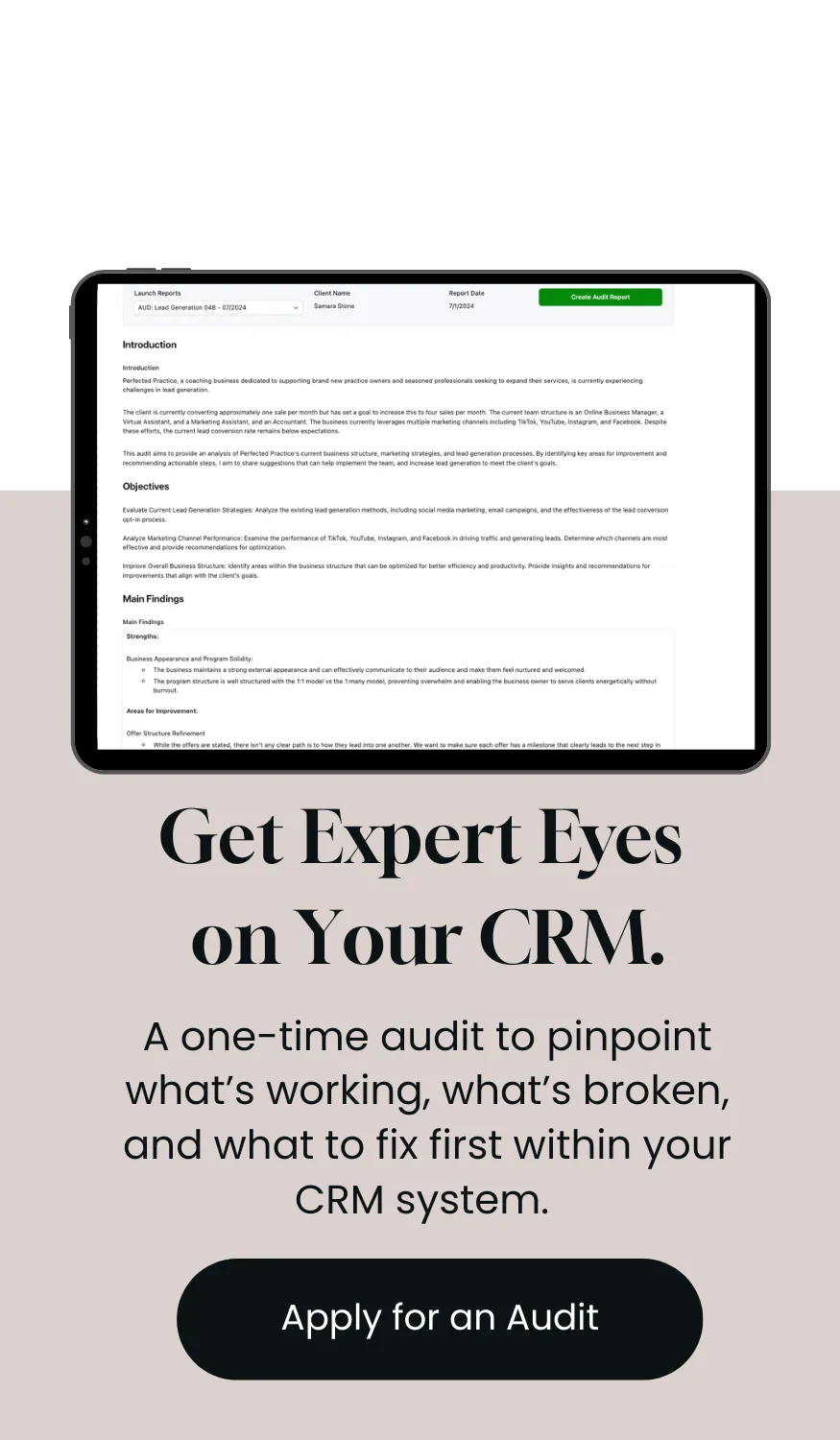The Right Way to Document a Process (So People Actually Use It)
You’ve seen it before: that gray-zone project where no one has the full map, yet somehow you’re the one asked to “figure it out.”
As the operations or RevOps specialist, your job is to ask foundational questions, map the logic, and produce the unified doc that finally brings everyone onto the same page. That’s what a strong RevOps professional does — you create shared understanding.
But here’s the truth: very few people know how to do this well.
I’ve been through enough “process maps” and scattered SOP folders to realize there’s a better way to document. A way that makes sense to stakeholders, is easy for operators to follow, and becomes the single source of truth your team actually uses.
By the end of this post, you’ll know how to build two layers of documentation, anchor it with a visual, add a cheatsheet, organize by audience, and reinforce it until it becomes operational reality. You’ll even get a structure you can plug in immediately for faster setup and share-ability with your team.

Here’s what we’ll cover:
Step 1: Create the “Thinking” Layer
Step 2: Create the “Doing” Layer (SOP/Checklist)
Step 3: Use a Visual Anchor
Step 4: Add a Cheatsheet Block
Step 5: Organize by Audience
Step 6: Layer Access for Scalability
Step 6: Reinforce Through Repetition
Then, we’ll wrap with a few common mistakes and FAQs to save you time down the road.
Step 1 - Create the "Thinking" Layer
This is the high-level process overview — the document that answers, “Why are we doing this?” and “What does done look like?”
If you skip this and jump straight to the SOP, you’ll spend weeks fielding questions like:
“Who owns this step?”
“Where does this go after intake?”
“Wait—why are we even doing it this way?”
Key points / checklist:
Define the purpose (“why this exists”)
Identify owner + supporting teams
Note the trigger (what starts the process)
Specify systems/tools involved
Define the outcome (what done looks like)
Build a simple flow/diagram (we’ll get to visuals in Step 3)
Pro Tip: Keep this to one page. Your goal is to give context, not detail.
Step 2 - Create the "Doing" Layer (SOP/Checklist)
This layer is for the person executing the work — the operator, VA, or teammate on the front line. It should be so clear they can open it and act without asking “what now?”
How to build it:
List preconditions (what must exist before starting)
Write steps as short, actionable bullets
Include screenshots or Looms if helpful
Link templates, forms, or references
Add a troubleshooting section
Common mistakes to avoid:
Writing in paragraphs (“The user will then…”) instead of direct bullets
Assuming knowledge (skipping “log in to X”)
Forgetting exception paths or troubleshooting
Step 3 - Use a Visual Anchor
Humans are visual. A simple flowchart or puzzle map helps people see how everything connects long before they read a single line.
Key points:
Keep visuals to 5–7 boxes — any more, and it becomes noise
Label ownership clearly (“RevOps,” “Referrals,” etc.)
Use consistent icons or shapes
Pro Tip: Embed the same visual at the top of both docs (Thinking + Doing). It’s the shared compass that aligns everyone.
Step 4 - Add an Overview Section (Your Cheatsheet)
This is your “TL;DR.” The one block everyone will actually read.
Include:
Owner
Trigger
Goal
Primary tools
Teams involved
Key links (visual, SOP, dashboard)
Pro Tip: Place this directly below the title, in a shaded box or simple table. Make it impossible to miss.
Step 5 - Organize by Audience
Different people care about different parts of a process.
Executives want outcomes and ownership.
Operators want clarity and steps.
RevOps wants data accuracy and automation logic.
How to structure this:
Use sections like For RevOps, For Credentialing, For Referrals
Add audience-specific notes (“Credentialing: verify NPI before Step 3”)
Use collapsible sections if your doc platform allows it
Pro Tip: Write as if you’re documenting for someone outside your head. If a new hire could follow it confidently, you’ve nailed it.
Step 6 - Layer Access
This is where structure meets usability. Layered access mimics how adults learn and navigate: scan first, dive later.
Recommended structure:
Knowledge Base Overview → big-picture explanation, linked processes
Process Page → context, owner, links
SOP → step-by-step checklist
Resources → templates, screenshots, FAQs
This hierarchy keeps your documentation clean, scalable, and adaptable as processes evolve.
Step 7 - Reinforce Through Repetition
Even the best-written doc won’t stick unless you build it into your team’s rhythm.
Actions:
Add links to meeting agendas and onboarding templates
Pin it in Slack or your communication hub
Embed it in your project management tool (Asana, Monday, ClickUp)
Review monthly or quarterly
Pro Tip: Host a short “Process Walkthrough” meeting once per quarter. Ask your team, “What surprised you?” That question alone exposes blind spots.
Common Mistakes & FAQs
Mistake #1: One doc for everyone.
→ Solution: Split it into the Thinking (context) and Doing (SOP) layers.
Mistake #2: Over-complicated visuals.
→ Keep visuals short. If you need more, build decision trees in layers.
Mistake #3: No owner.
→ Publicly assign a name — ownership is clarity.
FAQ #1: What if the tool changes?
→ Update the SOP, note it in your changelog, and notify the team.
FAQ #2: Can we skip the visual?
→ Sure, if you love confusion. Don’t skip it. People need to see the system.
Wrapping Up
Most documentation fails because it lacks one of four things: context, visual, checklist, or ownership.
If you’re missing any of those, adoption dies.
Your challenge this week:
Pick one process in your business that’s fuzzy.
Create the two layers.
Add a visual.
Write the overview.
Organize by audience.
Then share it.
That’s how clarity becomes culture.
Thank you so much for reading!
Keep up the momentum with one or more of these next steps:
📣 Sharing helps spread the word, and you’ll look like a total genius when someone receives this blog recommendation from you. + Posts are formatted to be easy to read and share.
📲 Hang out with me on LinkedIn. Don’t be afraid to say hello or message me.
📬 Want to meet online? Schedule a call to connect with me. I'm happy to discuss system, RevOps and grow a new connection.
📊 f you’re unsure which tool fits your tech stack, I’ll map your process, system, and governance setup — and give you the rollout plan to match. Schedule a CRM Audit Discovery Call. to get started.




